SEO Basics: The Beginner’s Guide to SEO From SEO Experts
Master SEO basics with our beginner’s guide, exploring the importance of SEO, how search engines function, and practical steps to kick-start your SEO journey.
Written by WebFX Marketing Experts
Last Updated March 24, 2025
Welcome to SEO basics, your beginner’s guide to search engine optimization! Here, you’ll learn:
- What is SEO?
- How do search engines and SEO work?
- How do I get started with SEO?
Keep reading SEO 101 to begin your SEO journey!
Chapter 1: SEO basics
Learn the SEO basics, including:
Or, skip ahead to the next chapter on on-page SEO basics!
What is SEO?
Search engine optimization (SEO) is optimizing a website to improve its visibility in organic search results, like on Google. Typically, SEO takes three to six months to show results. Common optimizations for SEO include improving page speed, researching keywords, and creating content.
Is this information too basic? Skip over to our On-Page SEO Guide or the SEO Blog to learn more about the inner workings of SEO for your website.
How do search engines work?
When it comes to SEO 101, understanding how search engines work is essential. That’s because search engines fuel search engine optimization, setting the standards that define the strategies, best practices, and tips that SEOs use.
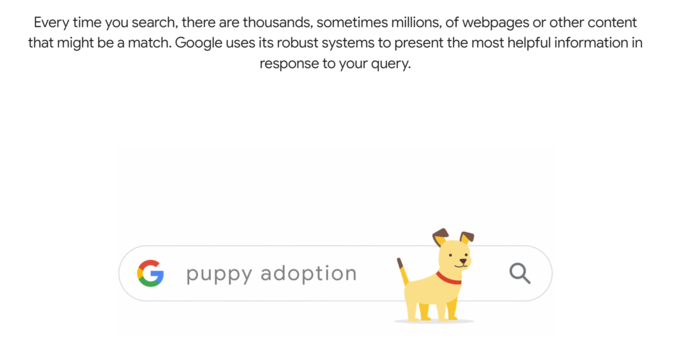
You can break how search engines work into the following steps:
- Crawling
- Indexing
- Ranking
Learn more about these individual processes below:
🕷️ Crawling
Search engines are like a library, and to build their library, they need to crawl the web. Search engines rely on web crawlers (or spiders) to explore the World Wide Web’s content. Crawlers then return this content to search engines, which they then index.
📚 Indexing
The indexing stage is like a librarian reviewing, organizing, and shelving various books in the library. Here, the search engine’s algorithm catalogs the content, which the search engine then relies on to deliver results to searchers.
⚖️ Ranking
In SEO 101, ranking is the grand finale of how search engines work.
When someone searches on Google or Bing, these search engines rely on their algorithms to deliver tailored results that align with the user’s needs and preferences, like their location, previous searches, and more.
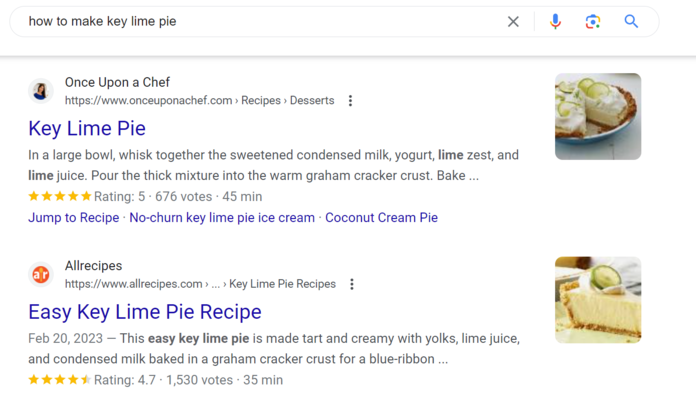
How content appears in the search results is based on these factors, plus more than 200 other factors. These ranking factors (which are not weighted equally) cover everything from website security and online reputation to content helpfulness and authority.
When you practice SEO, you optimize for these 200+ factors (or at least the most important ones).
How does SEO work?
Search engine optimization works by optimizing a website for more than 200 search engine ranking factors. Before you close the tab on this search engine optimization 101 rundown, SEO specialists do not optimize for all 200 factors. Instead, they focus their efforts on the most significant ranking factors.
You can organize these factors into three categories:
- Off-page SEO: Off-page SEO focuses on your site’s online reputation.
- On-page SEO: On-page SEO focuses on your site’s user experience.
- Technical SEO: Technical SEO focuses on your site’s backend optimization.
Within these categories, there are multiple optimizations to work on, which you can preview below:
| SEO category | Optimizations |
| Off-page SEO |
|
| On-page SEO |
|
| Technical SEO |
|
Why is SEO important?
Search engine optimization is important for a few reasons, including the following:
Visibility
SEO helps websites like yours improve their online visibility — without the cost of pay-per-click (PPC) or social media advertising. With that kind of visibility, you can reach your target audience at the perfect moment, as they search for products or services you offer.
Targeting
Search engine optimization is also helpful because of its targeting capabilities. Whether you’re looking to reach people in a specific town (like Los Angeles) or people in the awareness vs. decision stage, you can do so with SEO.
Activity
Year-round SEO will work for your business and its website. Whether inside or outside your working hours, people can find your business online and start their journeys to become clients.
Returns
People from across industries, from business-to-business (B2B) to business-to-consumer (B2C), have seen consistent (and impressive) results from search engine optimization through traffic, leads, and sales.
Long story short, SEO is important because it helps website owners drive qualified traffic and sales.
If SEO sounds like a full time job so far, that’s because it certainly can be! If you are interested in seeking professional help to meet your SEO needs you can check out our SEO Companies page or view our SEO Services.
Chapter 2: On-page SEO basics
Learn the search engine optimization basics of on-page SEO, including its:
Or, skip to the next chapter on off-page SEO basics!
What is on-page SEO?
On-page SEO is the optimization of on-site elements for search engine optimization, like:
- Keyword research
- Title tags
- Meta descriptions
- Header tags
- Images
- Internal links
- URL
As a cornerstone to the basics of search engine optimization, learning on-page SEO is critical, especially if you’ll be doing SEO yourself vs. with the help of an SEO agency.
Why is on-page SEO important?
On-page SEO is important because it helps search engines and users:
- Discover your content
- Understand your content
When it comes to SEO, you need on-site SEO to rank — and rank well — in search results.
How to do on-page SEO
Get started with on-page SEO with these basics:
Keyword research
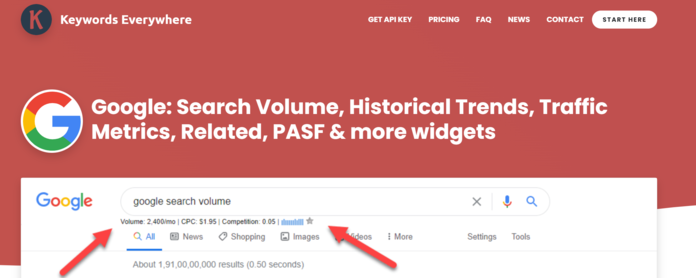
Use Keywords Everywhere, Ahrefs, Semrush, or Google Search to research high-volume, low-competition search queries relevant to your business and target audience. Focus on long-tail keywords (queries with three to four words) for a more targeted reach.
Title tags

Write compelling title tags for your content by following key best practices in SEO 101. For example, use your target keyword’s search results to determine the optimal format and phrasing. Then, include your target keyword while maintaining a length of 60 characters or less.
Meta descriptions

Create informational meta descriptions for your content by following similar best practices. For example, answer your target keyword’s search intent and incorporate your target keyword. Maintain a meta description length of 150 characters or less.
Header tags

Develop SEO-friendly header tags, like your H1, H2s, H3s, and so on, by reviewing the top-ranking URLs for your target keyword to better understand its search intent. Some of the best rank tracking tools out there can help you identify the pages ranking well for your keyword, like Ahrefs. Then, use your header tags to target your keyword, plus help users find the information they need.
Images

Use images, from screenshots to graphics to stock photos, to meet search intent and optimize the user experience. Optimize your images with short, descriptive filenames and alt text. Then, compress them before uploading them to your site with a free tool like Squoosh.
Internal links
Help search engines and users navigate your site with internal links. Add your most important URLs to your navigation and footer, and ensure every page on your website receives at least three internal links (with descriptive anchor text) from other internal URLs.
URL

Organize your website with a logical site architecture, like placing informational content in a /blog/ folder and product pages in a /products/ folder. Use hyphens to separate words and brief, concise URL slugs, like /google-pixel-case/ vs. /123456-google-pixel-case/.
Learn more about on-site SEO with our on-page SEO guide from our SEO resource library! You can also get an overview of how your SEO is doing with our SEO Checker.
Need professional help with on-page SEO? Don’t worry! Check out our on-page SEO services and connect with our team.
Chapter 3: SEO content
Learn the search engine optimization basics of SEO content, including its:
Or, skip to the next chapter on off-page SEO basics!
What is SEO content?
SEO content is online content optimized for search engine optimization. Types of SEO content include:
- Blog posts
- Longform guides
- Interactive content
- Videos
Common optimizations for SEO content include:
- Using targeted keywords
- Optimizing content structure
- Improving readability
- And more
Why is SEO content important?
So, why is content important for SEO? SEO content is important for a few reasons, including the following:
- Helps search engines evaluate a URL’s usefulness
- Attracts qualified, targeted traffic to a website
- Builds a website’s authority and trust in its online sphere
- Establishes (and nurtures) relationships with readers
Lack of compelling content is a common reason why a website doesn’t drive leads. In search engine optimization, content is non-negotiable — you need it to attract, nurture, and convert leads.
How to do SEO content
Get started with SEO content with these SEO basics:
Topic research
Speak with client- or customer-facing team members (you can also browse online forums) to understand your target audience’s needs and then use keyword research tools to find the best keywords to target for these topics.
E-E-A-T

Lean into your experience, expertise, authoritativeness, and trustworthiness (a confirmed Google ranking factor) by writing content that shares your first-hand experience and opinion, plus highlights your brand’s years of experience, certifications, and other trust factors.
Content organization
Optimize your content’s structure by referencing the top-ranking URLs for your targeted search term. You can determine which questions to answer first, second, third, and so on based on the search intent.
Content skimmability

Help users navigate your content by optimizing its skimmability. Use header tags, three-line paragraphs, ordered and unordered lists, and text formatting features (like bold, underline, or italics) to help people find what they need faster.
Content readability
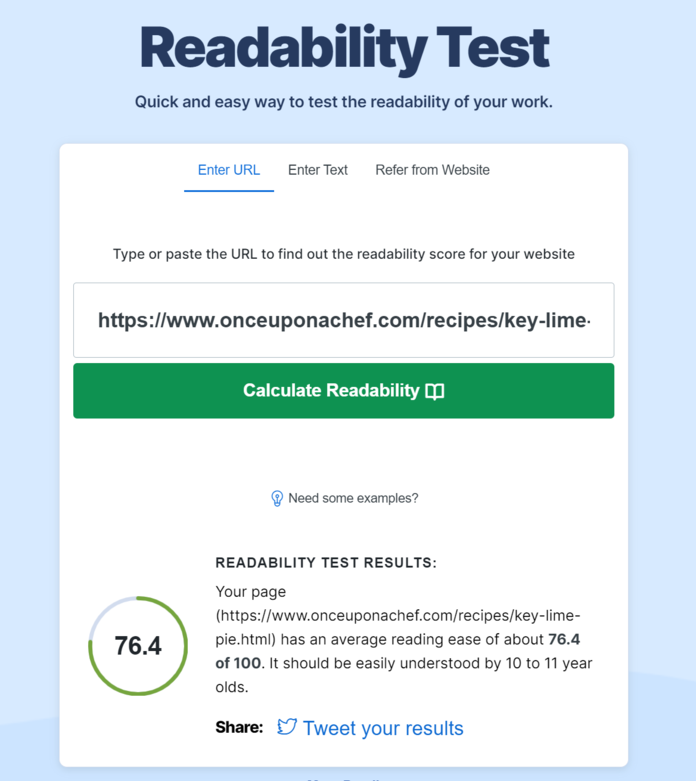
Use free tools like Grammarly, Readability Test, and Hemingway Editor to proof your content. These tools can help you find grammar and spelling errors, plus opportunities for improving your content’s readability, which you should tailor to your audience.
Learn more about this basic of SEO in our SEO content guide!
Chapter 4: Off-page SEO basics
Learn the search engine optimization basics of off-page SEO, including its:
Or, skip to the next chapter on technical SEO basics!
What is off-page SEO?
Off-page SEO is the optimization of a website’s off-site SEO. Off-site optimizations include acquiring reputable backlinks, claiming and optimizing local listings, managing online reviews, and engaging in online communities.
Why is off-page SEO important?
Off-page SEO is important for a few reasons, including:
- Helps search engines understand your site’s online authority and reputation
- Gives users background on your site through online reviews and local listings
- Serves as one of the most influential SEO ranking factors
As one of the most important ranking factors in SEO, off-page optimization is critical to include in your SEO checklist.
How to do off-page SEO
Get started with off-page SEO with these SEO basics and tips from our SEO checklist:
Content
Produce original content, from research-based blog posts to interactive tools, to generate interest and attract authoritative backlinks. You will struggle to acquire backlinks without original content (or content that does it better than anything else).
Outreach

Practice outreach to connect with publishers in your industry, from news sites to bloggers to industry influencers. Offer value by providing an alternative to a broken link on their site or suggesting a compelling content idea (that you’re willing to write). Expect to get rejected.
Local listings
Claim and optimize local listings like Google Business Profile and Bing Places. Besides linking to your website, these listings will help demonstrate to search engines (and users) that your business is genuine.
Online engagement

Engage with your user base through local listings and relevant online forums, like Reddit or Quora, to build your reputation as a trustworthy information source. Avoid selling or over-promotion on online forums, which can backfire by creating distrust.
Learn more about this crucial factor in SEO 101 in our off-page SEO guide!
Chapter 5: Technical SEO basics
Learn the search engine optimization basics of technical SEO, including its:
Or, skip to the next chapter on the basics of local SEO!
What is technical SEO?
Technical SEO is the optimization of on-site technical elements. These elements include:
- Page speed
- Page experience
- Responsiveness
- Site security
- Robots.txt file
- Sitemap files
- Structured data
- And more
This area of SEO often requires collaboration with web developers and web designers. Just check out our web design services to learn how we can help you optimize your site for the above elements and more!
Why is technical SEO important?
Technical SEO is important for SEO beginners for a few reasons, including the following:
- Allows search engines to crawl a URL
- Helps search engines better understand a URL and its context
- Shapes a URL’s usability and accessibility
Optimize for technical SEO or turn to technical SEO services to help your site rank and convert better.
How to do technical SEO
Learn how to get started with technical SEO below:
Robots.txt
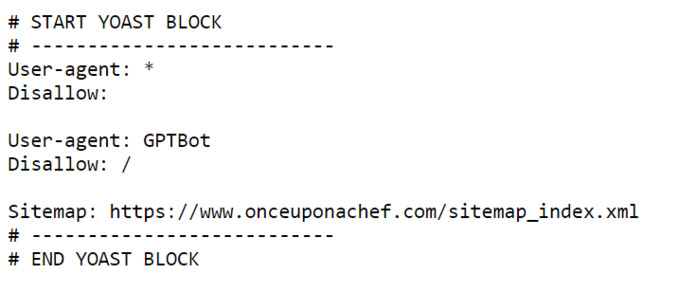
Use your robots.txt file to direct search engine web crawlers on what to crawl. A robots.txt file can prevent your site from getting crawled and indexed, so check your setup with Google’s free robots.txt tester tool.
XML sitemap
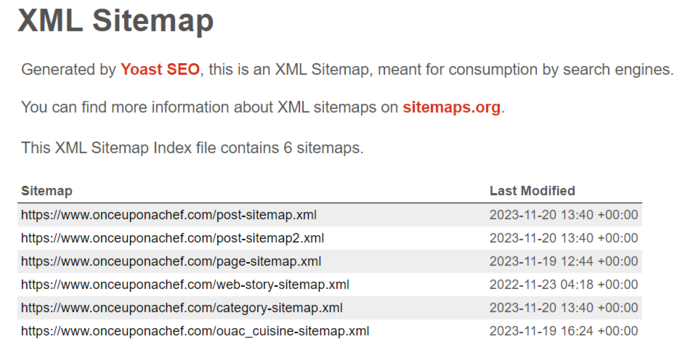
Generate an XML sitemap to provide web crawlers with a map of your site. Use a free third-party tool like Yoast SEO to speed up (and even automate the process). Submit your sitemap to Google Search Console and Bing Webmaster Tools.
Site security
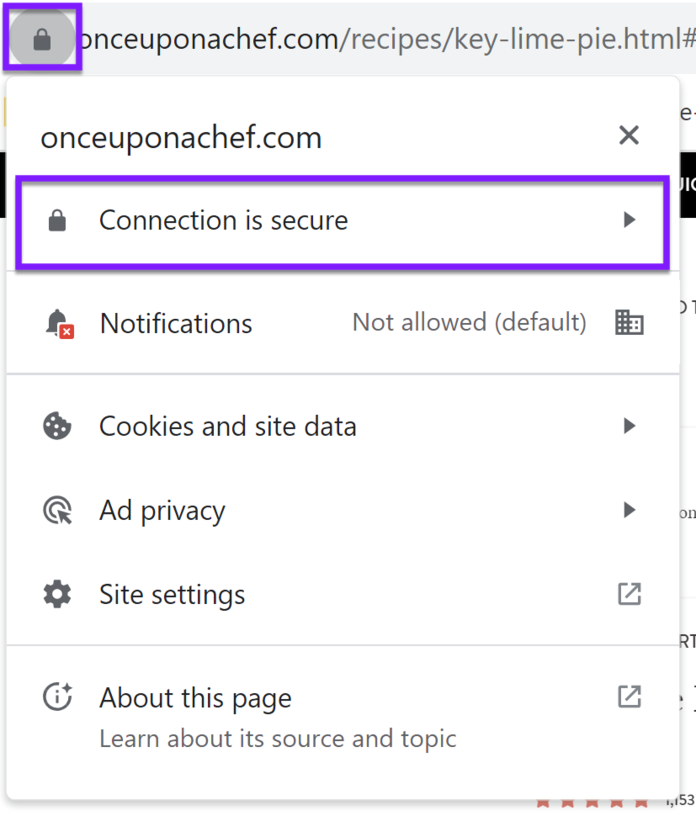
Create a secure, trusted website by purchasing an SSL certificate (which stands for Secure Sockets Layer) and moving your site from HTTP to HTTPS. Follow Google’s HTTP to HTTPS guidelines for your migration to minimize risks to your search engine optimization efforts.
Page speed
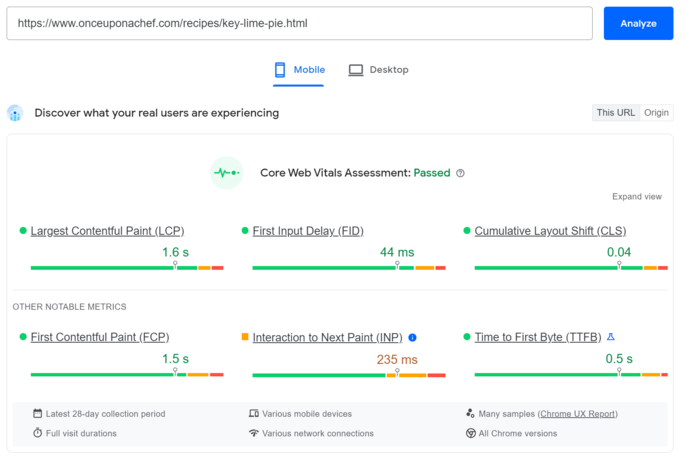
Build a fast-loading, fast-to-respond website by following best practices like compressing images, minifying code, enabling browser caching, and using a Content Delivery Network (CDN). Use Google’s PageSpeed Insights tool to get URL-specific recommendations.
Page experience
Create a better page experience by optimizing your site’s accessibility and usability. For example, use text and background colors with optimal contrast and have a responsive design that adapts to the device, like desktop vs. tablet.
Structured data
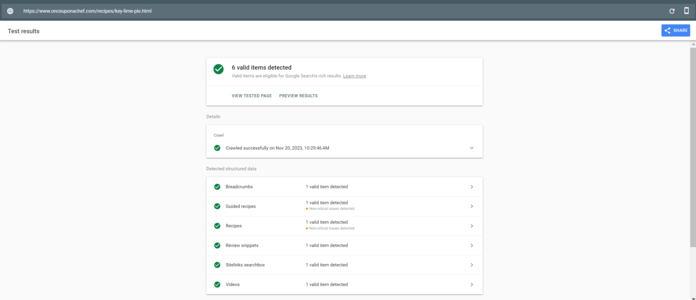
Add structured data to relevant URLs to provide search engines greater context. Use Google’s free Structured Data Markup Helper tool, plus its Rich Results Test tool, to create and verify your markup before installation.
Learn more about this basic of SEO in our technical SEO guide!
Chapter 6: Local SEO basics
Learn the search engine optimization basics of local SEO, including its:
- Definition
- Importance
- Optimization
Or, skip to the next chapter to discover answer engine optimization or AI SEO!
What is local SEO?
Local SEO improves localized search result visibility for:
- Websites
- Local listings, like Google Business Profile
Common optimizations for local search include:
- Claiming local listings, like Bing Places, Apple Maps, and Google Business Profile
- Standardizing name, address, and phone number across listings
- Producing unique, localized content, like “san francisco, ca electrician”
- Attracting genuine online reviews on local listings
- Building a localized backlink profile
Why is local SEO important?
Local SEO is important because it helps people, from consumers to business buyers, find something in a specific area, whether it’s an emergency plumber, a well-rated restaurant, or a family-friendly excursion.
From a business perspective, optimizing for local search helps:
- Build brand awareness
- Create foot traffic or in-store visits
- Generate leads, jobs, or bookings
Even companies that operate globally can benefit from local SEO. That’s because local listings, like a Google Business Profile with photos, reviews, and address information, build trust and authority by demonstrating that you’re a real company.
How to do local SEO
Learn how to start doing local SEO in this SEO beginners’ breakdown:
Add NAP
Your name, address, and phone number (also known as NAP) are vital to local search engine optimization. That’s because search engines use that information to understand your business’s location and contact information.
People use this information, too, like for:
- Booking an appointment
- Getting directions
- Finding more information about a brand
Companies should include NAP in a few locations on their website:
- Footer (if operating multiple locations, list your headquarters or top ones)
- Contact page
- Locations page (if operating at multiple locations)
For the best results with this optimization, include your business hours, too.
Claim local listings
Next, claim or create the following local listings:
- Google Business Profile
- Bing Places
- Apple Maps
There are plenty of other local listing sites that you can also use, like:
- Yelp
- Better Business Bureau
- Yellow Pages
Just remember that each listing is another listing to manage.
That’s why most businesses, especially those with multiple locations, will invest in local listing management software, which allows you to post a single update (like a change in hours) across listings.
For the best results, consider claiming or creating a profile on social media networks like Facebook, LinkedIn, Instagram, and X.
Some examples of these tools include:
- Birdeye
- Moz Local
- LocalFX
Continuing to optimize your local profiles, like by updating your holiday hours, sharing promotions, or responding to reviews, will help your business perform and engage in local search results.
Invite reviews
Reviews serve a critical role in the buyer journey.
Whether someone’s looking for a weekend excursion with their family or how much a backyard patio will cost, they’re looking for a business they can trust — and for that, they turn to reviews.
People read reviews across places, including:
- Your website
- Your local listings
- Your mentions on other websites
While attracting online reviews is a team effort, from the marketing to the customer experience to the product or service, marketers can take some steps to generate more reviews.
For example, you can:
- Use traditional marketing, like with business cards or window stickers
- Use email marketing, like with a drip campaign after a purchase
- Use social media marketing, like with a post asking for feedback
Keep in mind that certain local listing sites, like Google Business Profile, prohibit incentivizing reviews. You can’t, for example, offer someone a free meal, gift card, or raffle entry in exchange for a review.
Target localized keywords
Another SEO basic for local search is targeting localized keywords, like:
- san fran ca electrician
- gluten-free bakery sugarland tx
- water park near me
Localized keywords are similar to non-localized keywords. They target a specific intent, but the intent is localized. Instead of exploring the best water parks, someone wants to find a water park near them.
When it comes to localized content, the most common mistake we see businesses make is creating duplicate content. Instead of producing a unique page for each of its service areas, the business will make a page where the only difference is the service area.
You need unique content to succeed with this tactic. Make it unique by:
- Highlighting unique features of the area, like landmarks or events
- Including location-specific photos, like of your building
- Addressing area-specific concerns (if relevant)
Learn more about the basics of local search in our local SEO guide!
Chapter 7: AI SEO basics
Learn the search engine optimization basics of AI SEO, including its:
- Definition
- Importance
- Optimization
Or, skip to the next chapter to learn SEO analytics!
What is AI SEO?
AI SEO, or answer engine optimization, improves a brand’s visibility in answer engines, like:
- ChatGPT
- Perplexity AI
- Gemini
Effective optimization tactics include:
- Practicing search engine optimization
- Producing standout content that includes data points, interactive elements, and more
- Improving brand awareness and reputation
Why is AI SEO important?
AI SEO is important because AI usage is growing, with 1 in 10 U.S. users using AI first for online searches. While traditional search engines like Google still dominate search experiences, the growth of tools like ChatGPT is unprecedented.
Companies that adopt answer engine optimization now are giving themselves a first-to-market advantage. Not to mention, they’re practicing SEO, which is critical to appearing in answer engine responses.
Note: Using AI for SEO is also important! With AI platforms like TeamAI and ChatGPT, businesses can streamline SEO tasks, like generating schema markup, determining search intent, and more.
How to do AI SEO
Learn how to start doing AI SEO in this SEO beginners’ breakdown:
Master the basics of SEO
Websites practicing search engine optimization get cited or mentioned more in answer engines than websites that aren’t. That’s why it’s vital webmasters master the basics of SEO before exploring answer engine optimization.
You can use this guide to learn how to get started with SEO!
Level-up content value
Generic content doesn’t work for answer engines.
People use answer engines to get answers unique to them, whether it’s an exercise routine for chillier seasons or a vacation plan for a family that loves the outdoors and affordable getaways. And answer engines look for detailed content to answer these questions.
Make your content more detailed and valuable by:
- Including data points, like from internal or external research
- Building content assets, like interactive tools or guides
- Providing specific advice, like “Do 10 jumping jacks…”
Remember to use other SEO content best practices, like using headings, short paragraphs, lists, and tables to improve content skimming, as well as inserting targeted words or phrases throughout the copy.
Build a reputable online brand
With this optimization, you’ll re-use optimizations from other areas, like:
- Off-page SEO, with building a reputable backlink profile
- Local SEO, with claiming local listings
You can use the previous chapters in this guide to explore those optimizations in-depth.
Learn more about the basics of AI search in our AI SEO guide!
Chapter 8: SEO analytics basics
Learn the search engine optimization basics of SEO analytics, including its:
Or, skip to the next chapter on getting started with search engine optimization!
What is SEO analytics?
SEO analytics tracks, measures, and evaluates your SEO performance. Google Search Console and Google Analytics 4 offer a free solution for tracking rankings, traffic, conversions, and other valuable SEO metrics and are popular SEO analytics tools.
Why is SEO analytics important?
SEO analytics are important for a few reasons, including the following:
- Support a goals-driven SEO program by tracking and measuring your performance
- Understand on-page, off-page, and technical SEO performance
- Measure return on investment (ROI) from search engine optimization
- Make data-driven decisions about your SEO strategy
SEO analytics lets you find what’s working, what isn’t, and what to do next. It also helps you prove the value of SEO to leadership.
How to do SEO analytics
Learn how to get started with SEO analytics in this SEO beginners’ breakdown:
Tools

Use free platforms like Google Search Console and Google Analytics 4 to track your SEO efforts. You’ll receive position, impressions, and clicks data with Google Search Console. Google Analytics 4 will provide traffic and user metrics, like bounce rate, time on page, and more.
Metrics
Choose your most relevant metrics for measuring your SEO success. Avoid using too many vanity metrics and include data points that affect your business more broadly, like the number of leads or sales from organic traffic.
Goals

Outline SEO goals based on your tools and metrics. Understand what your company’s stakeholders want from search engine optimization and use those as a baseline for creating specific, measurable, achievable, realistic, and timely goals.
Analysis
Set regular intervals for evaluating your SEO performance (keep in mind SEO can take three to six months to work). Look for trends and outliers while considering seasonal factors to brainstorm what’s working and where to improve.
Learn more about tracking and measuring SEO as an SEO beginner in our SEO analytics guide!
How to get started with SEO basics
If you’re ready to bring all the above together, check out these brief SEO basics:
- Read Google’s guide on how to start appearing in Google search results
- Register your website with Google Search Console and Google Analytics 4
- Build your knowledge with reputable guides, videos, and blogs (like ours!)
Then, put your knowledge to use on your website and measure your performance with the above tools! If you’re looking for more guidance, check out our SEO podcasts and SEO FAQs for answers to the most common SEO questions.
Start practicing SEO basics on your site
Congrats, you’ve learned the basics of SEO! Now, you’re ready to start practicing SEO on your site — and SEO.com can help. From tracking rankings to auditing SEO content, SEO.com makes doing SEO yourself easy.
If you want a more comprehensive approach, our professional SEO services provide a dedicated account manager, complete SEO audits, tailored strategies, and access to industry experts.
Ready to elevate your SEO game? Contact us today to discover how our full-service solutions can drive traffic, boost conversions, and help you achieve your business goals!
Writers



Dive Deeper
-
Recommended Reading
Can You Do SEO Yourself? A DIY SEO Guide for Beginners
Read NowLearn about the pros and cons of DIY SEO, including cost savings and control, but also the lack of expertise and time commitment, and discover beginner-friendly steps to optimize your website yourself.
-
Recommended Reading
15 SEO Benefits That Get Websites to Start Doing SEO
Read NowWhether you’re debating about doing SEO or preparing a proposal for your leadership team, these SEO benefits will provide the information you need.
Download our free marketing guides
Because we know how tough marketing can get, we’ve created this handy guide for you based on our 25++ years of experience in the industry.
-
Unlock the secrets to dominating search engine results in 2025 with our exclusive PDF guide!
-
Start improving your site’s SEO with this beginner’s checklist!
-
Download this easy-to-use template to start your search for an SEO agency.
Let’s Drive Results Together
Connect with WebFX to get a digital strategy for your business.




